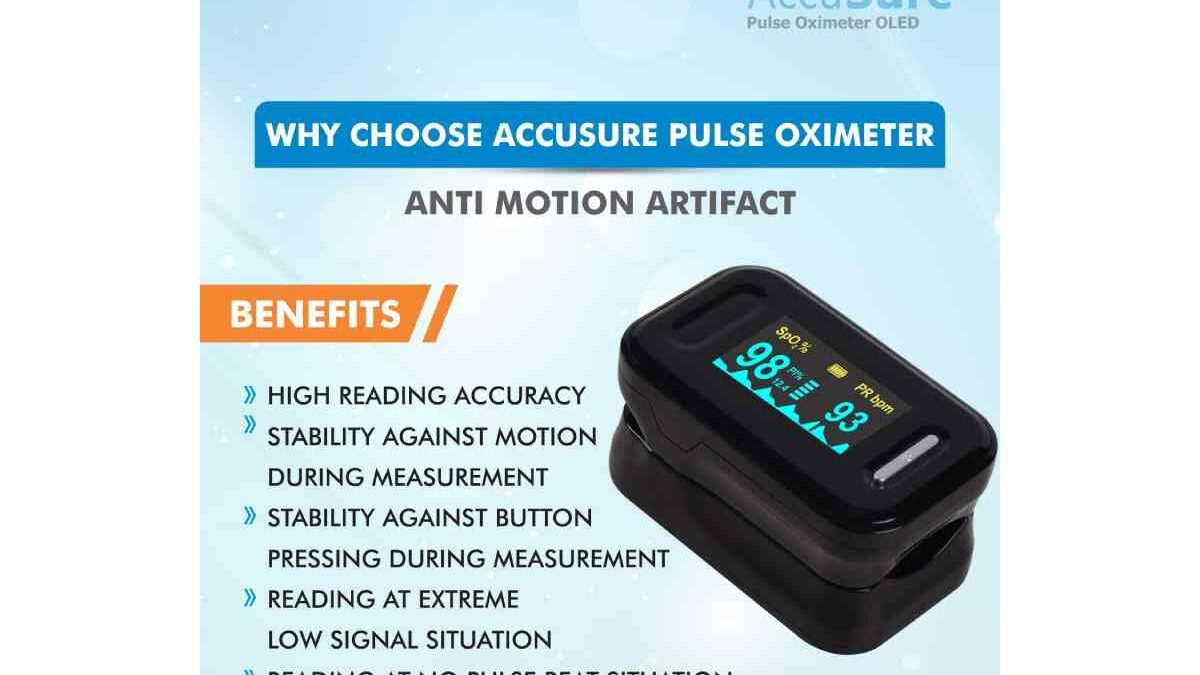3 Benefits of A Pulse Oximeter
The ongoing COVID-19 pandemic has significantly altered our lives. From masks, and vaccination cards, chances are that it’s still going to be a long time before things return to ‘normal.’ In the meantime, however, it is our responsibility to remain as safe and vigilant as possible; which is precisely where pulse oximeters enter into the picture.
You might have heard of pulse oximeters in conversations surrounding COVID, but contrary to popular belief, a pulse oximeter can be used in several situations. In order to ease all the doubts that might be swirling around in your head, we’re going to start by defining what pulse oximetry is, and then discuss the benefits that it has to offer.
Table of Contents
What is Pulse Oximetry?
Every organ in our body requires oxygen to function properly. If the oxygen supply to our cells is inhibited or cut off, organs may start failing and eventually die. To prevent this from happening, oxygen is transported to our cells via the lungs through the hemoglobin molecules in red blood cells.
As for pulse oximetry, it measures the oxygen saturation in blood, which is the number of oxygen molecules attached to the hemoglobin proteins. For a healthy individual, oxygen saturation levels are generally between 95-100 percent. If the oxygen saturation levels for an individual are below 90%, then it is to be considered abnormally low and could count as a clinical emergency.
How do Pulse Oximeters work?
Now that we’ve defined what pulse oximetry is, let’s get to pulse oximeters. Pulse oximeters are small devices that are clipped onto a finger, toe, foot, and read the blood flow of an individual.
Pulse oximeters read oxygen saturation levels by beaming light through a relatively transparent area of the skin. After passing through the skin, the light shines through a detector on the other side of the skin.
The amount of light that reaches the detector indicates the oxygen saturation and allows the pulse oximeter to provide a reading. Instead of directly measuring the oxygen saturation, the pulse oximeter uses a complex equation to give an accurate reading.
What are the benefits of Pulse Oximeters?
Oxygen saturation can decrease for a variety of reasons, including but not limited to, choking, COVID, suffocation, sleep apnea, allergic reactions, etc. A pulse oximeter comes in extremely handy for individuals who have pre-existing conditions that affect their oxygen saturation levels, or for a COVID patient who wishes to keep a check on their oxygen levels.
Other benefits of pulse oximeters include the following:
#1- Monitoring and alerting to low oxygen levels:
As mentioned above, the primary reason why anyone would want to purchase a pulse oximeter is that it allows individuals to monitor their oxygen saturation levels. If you are someone with a pre-existing medical condition that affects your oxygen levels, or alternatively, if you live with someone who has a similar condition, a pulse oximeter could be a lifesaver. Not only could you use a pulse oximeter to monitor oxygen saturation, it could also alert you to alarmingly low oxygen saturation.
#2- To assess how well a medication is working:
Oftentimes, a pulse oximeter allows individuals to assess how well a new medication or drug is working. In instances where a patient is bed-ridden, a family member or relative can use a pulse oximeter to determine if a new treatment plan is working.
#3- Easing the anxiety:
Lastly, a pulse oximeter allows patients and their family members to put themselves at ease. Dealing with low oxygen saturation levels can be demoralizing for many, and a pulse oximeter can help ease the anxiety, and calm the nerves a little.
Having said that, however, a pulse oximeter is a medical device that needs to be maintained and well-kept. In order to ensure the accuracy of the device’s reading, make sure that you’ve read the instruction manual, and are using it correctly. Consequently, if you need to purchase any parts to help sate the doubts in your mind, they can be found over here.

